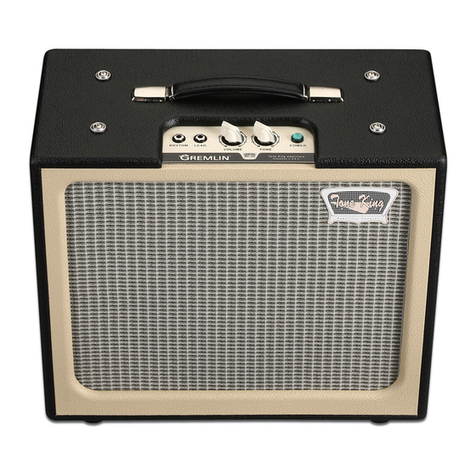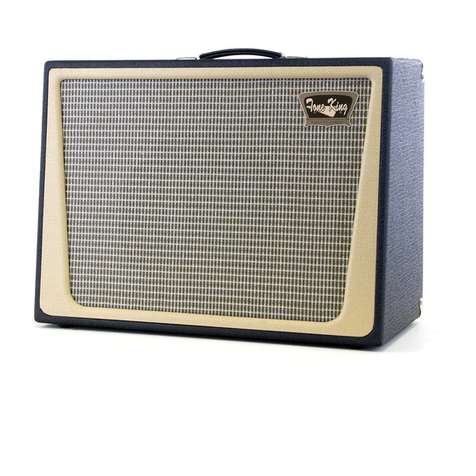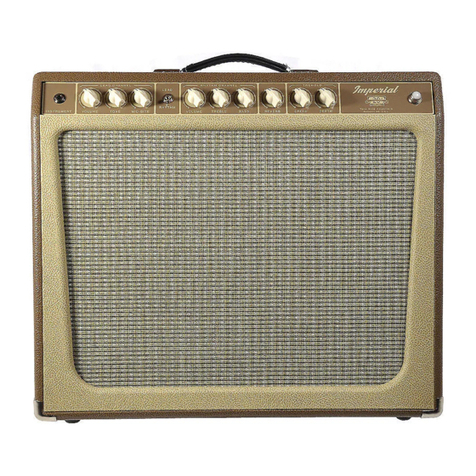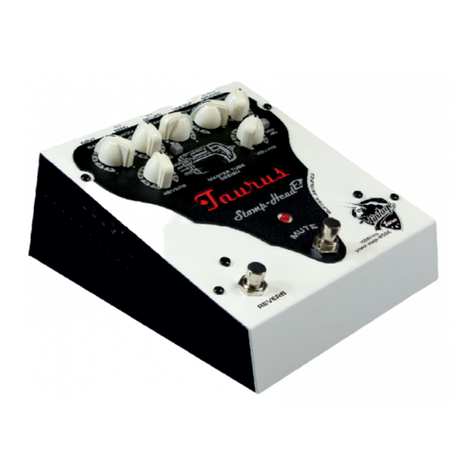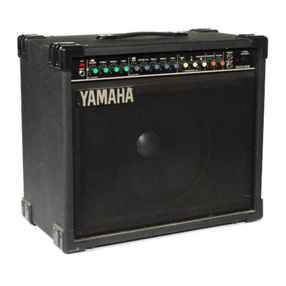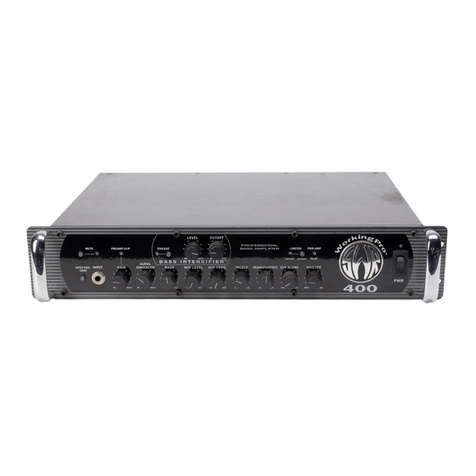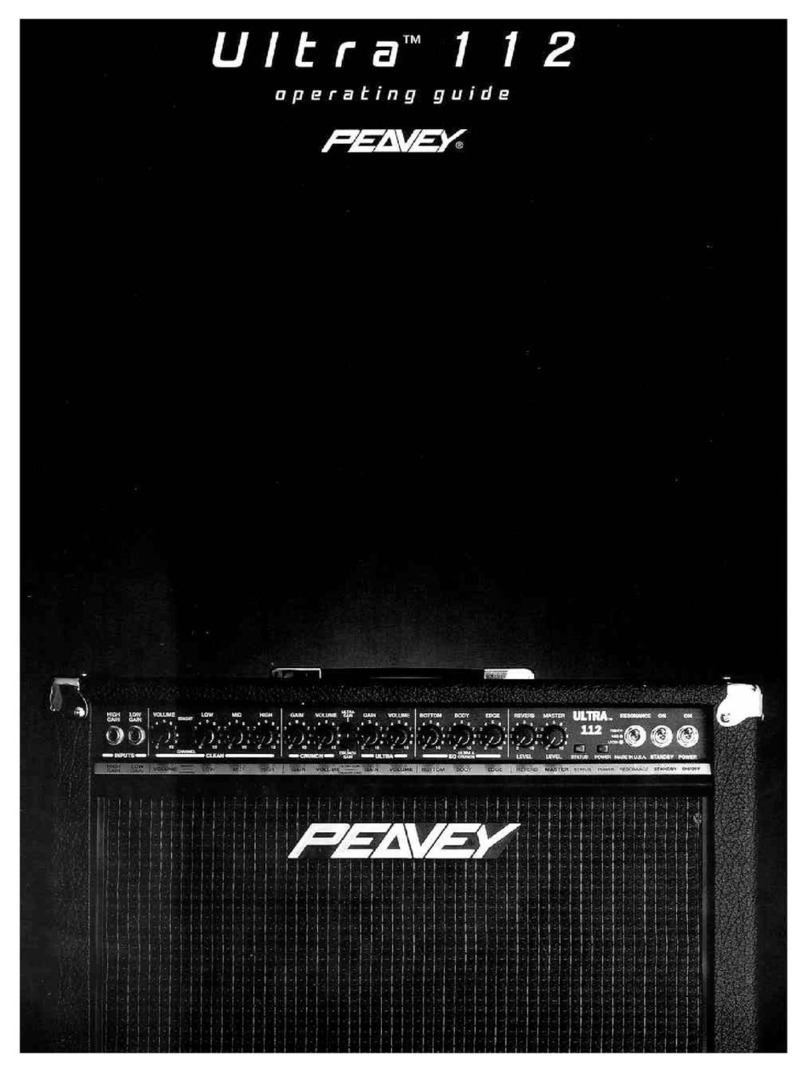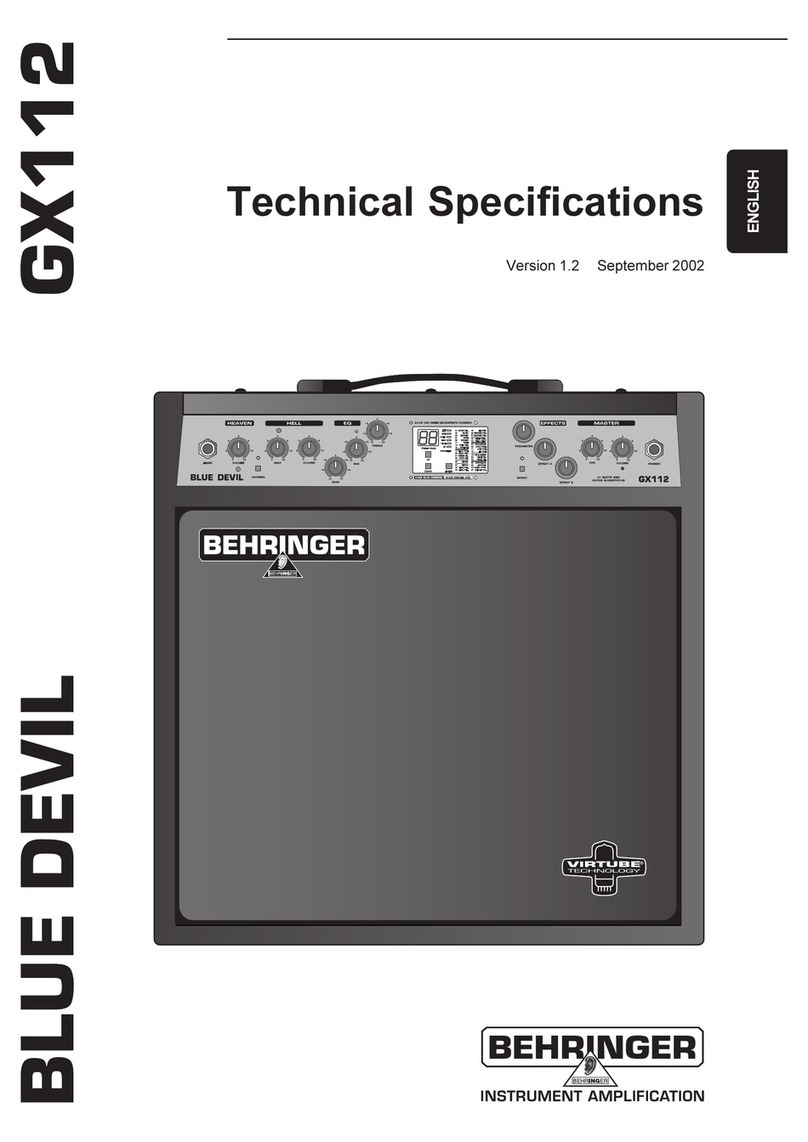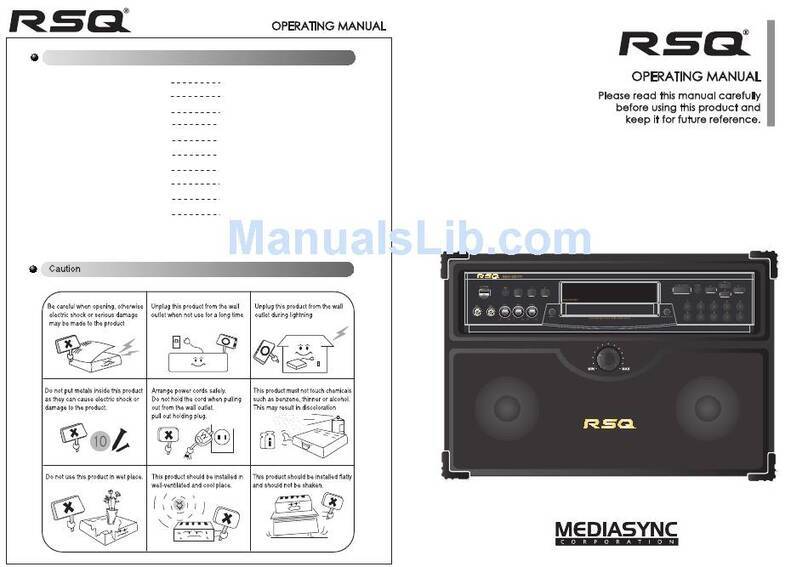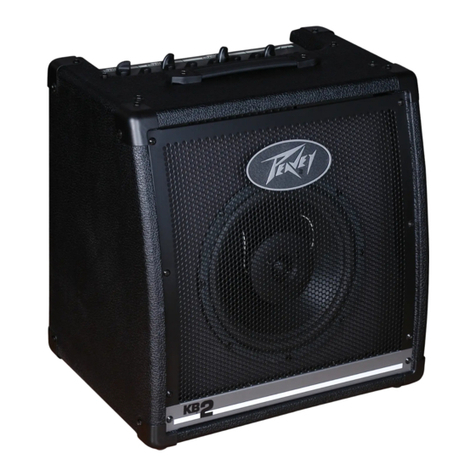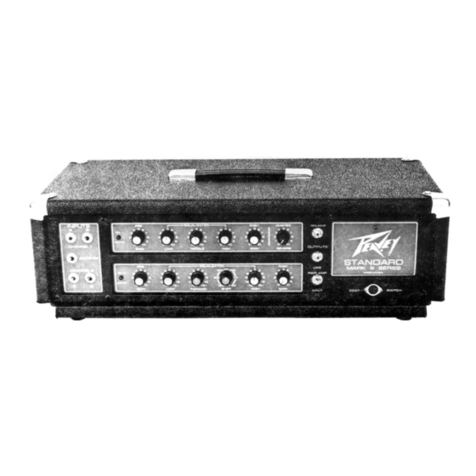
7
Speaker Jacks, Impedance Switch
Speaker Jacks, Impedance SwitchSpeaker Jacks, Impedance Switch
Speaker Jacks, Impedance Switch
When only one speaker is being used (e.g. the internal speaker), it must be plugged into
the “Main” speaker jack, and the Impedance switch should be set to match the
impedance of that speaker.
If you are using an extension speaker, but NOT using the internal speaker, then you
should plug the extension speaker into the Main speaker jack, and set the Impedance
switch to match the impedance of the external speaker.
The Extension speaker jack may only be used if there is also a speaker plugged into the
Main speaker jack. Inside the amp, the Extension speaker jack is wired in parallel with
the Main speaker jack. When using an extension speaker in addition to the internal 8-
ohm speaker, it is best to use an 8-ohm external speaker. Since the external speaker
is wired in parallel with the internal speaker, the total combined impedance will be 4
ohms, so you would set the Impedance switch to the 4-ohm position.
If desired or necessary, you may safely mismatch the impedance by as much as
doubling or halving the selected impedance. Mismatching beyond this is not
recommended. For example, if the Impedance switch is set to 8 ohms, you may use a
combined speaker load as low as 4 ohms or as high as 16 ohms.
Output Mode
Output ModeOutput Mode
Output Mode
This switch selects the operating mode of the output tubes. As described in the
previous sections for the Rhythm and Lead channels, the two modes give you distinctly
different feel and tone. It is important to understand and appreciate the qualities of
each operating mode, and it is the key to the Sky King’s tonal versatility. Here’s a brief
description of each mode:
Pentode Mode: 99% of all tube amplifiers built today and in the past have their
output tubes wired in pentode mode. In this mode, the screen grid is supplied
with a filtered supply voltage which is slightly lower than the plate voltage. The
sound and feel of tubes operated in this mode should be quite familiar. In
general, this mode will give you a sound that is crisp and present, with a fast
attack and a percussive response.
Ultralinear Mode: Only a handful of popular guitar amplifiers have been built
with their output tubes wired in Ultralinear mode. In this mode, the screen
grids are connected to taps on the primary of the output transformer. Tubes
wired this way can generate about the same level of power as Pentode mode, but
will create a unique sound and response, which is similar to what you would get
if they were wired in Triode mode (though in Triode mode, the output power
would be reduced). It is a sound that is richer in lower order even harmonics.
This is a more old-school kind of sound, with a thicker midrange and a sweeter,
rounder top end. You’ll also notice that it gives the amp a softer, more elastic
feel that makes it a joy to play.
A secondary effect you will notice in Ultralinear mode is that the gain of the
amplifier is reduced significantly. When switching between modes, you will need
to adjust the preamp volume controls to compensate.
When you switch between modes, you will hear a loud pop from the speaker. It is
perfectly safe to do this, but if you prefer to avoid hearing the loud pop, you may want
to switch to standby mode before changing the Mode setting.














